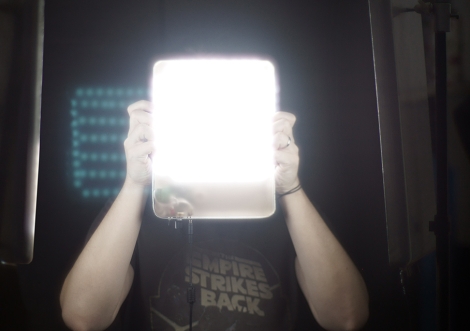
[Markus] had been drooling over some LED panels to use as a soft light source for photography, but being a hobbyist, he didn’t want to spend a ton of money to buy them. He figured that he had enough electronics know-how to build his own panels, while saving a boatload of cash in the process.
He hoped to keep the total cost under £100, so along with new items like LED light strips, he would have to use some stuff he had sitting around, like the metal cooking containers that make up the body of the lights. While originally planned for use in a different project, it turns out that the cooking containers were ideal for his lighting setup, since they are both durable and great heatsink material.
The remainder of the build is pretty straightforward. [Markus] used a pre-made LED dimmer to control the panel’s brightness, along with some tinted plexiglas to diffuse the light while bringing the color temperature into a more usable range.
While he missed his £100 mark, the lights look great – we just might have to build a few of them ourselves.















That’s a pretty steep price for the result in my opinion.
I mean, with one hundred pounds worth of CFLs, he could have build many soft boxes of this kind.
Leds are cool but not always the answer.
Nice use of cheap led strips. I may be replacing my light box with something like this soon.
I find LEDs bad as a light source for fotography. Tried a few pictures using both warm and cold white light. Cannot get white balance right, not even in PP.
As @ino says, that much money can get you a lot of CFL or incandescend. Plus diy stands and soft boxes.
hehe, you said PP
+1 all LEDs that I tried are even worse than CCFL lights. Impossible to fix white balance no matter what you do.
White balance should be easy enough to set in the camera provided the camera allows it (most dslrs do) just photograph some white paper lit by the leds and all is well.
Plus leds in theory allow for it to be battery powered very useful since 95% of my photos arent taken in a studio let alone indoors
I was going to ask something but I already answered to it :D
http://hackaday.com/2006/05/26/macro-photography-light-from-broken-lcd-monitor/
Indeed, the biggest issue I can see is LED light is a royal PITA for photography without some real consideration to spectral output and having a bunch of colours to cover the spectrum.
You will have to use separate RGB LEDs to get the spectrum right, as plain white LEDs have a spike at blue (the frequency the phosphorcoating gets stimulated) and other uneven distributions. With densely packed separate LEDs (or those RGB power LEDs housing the lot) you could blend the whitebalance to match your needs.
thank you Ken. Most of those are valid arguments, however with bit of tinting it with brown glass i managed to get it in reasonable range(7700k). what comes to spectrum its narrow, but after cutting some blue not bad at all. these where done from gray cards with analyzing image not very accurate method as camera is not calibrated, but gave a rough idea. Panels are built very much portability, robustness and ease of use in mind. which they cover for me very well. I am not arguing LED are perfect for photography, but serves what i need :) still think 100 pounds for this kind of kit is reasonable.
LEDs would seem, to me, to really mute reds and greens; just because of the spectrum emitted by the so-called white LEDs. A few red, green, and yellow ones scattered in could help if you wanted to shoot film. With digital, the sensor might be compensating since it only reads RGB and not CMY like negative films.